Roses For Life
Find out how to turn a beautiful bouquet into roses for life! In this month's garden lab, we're testing to see if we can regrow a new plant from a bouquet of roses. Read on to learn how you can keep those bouquets around longer instead of throwing them away.
GARDEN LAB
2/14/20254 min read
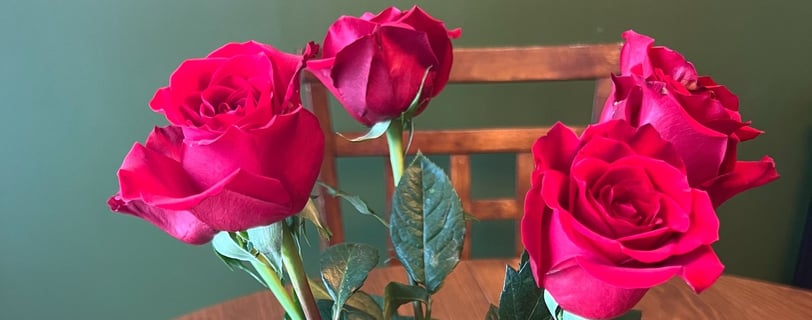

Happy Valentine’s Day Gardeners!
What if I said you could get beautiful roses for life for little to no cost? In this months bonus we will show you how easy it can be to grow a new plant from a bouquet.
When I got married my grandmother used roses from our wedding to grow a new plant we could cherish for years to come. With Valentine’s day here I began wondering why not try to grow a new plant from my Valentine’s roses?
After a trip to the local gardening and grocery store we gathered our supplies.
Supplies
Seed-starting soil mix
Rooting hormone
Clean cutting utensil
Something to plant in
Bouquet of roses- they can be fresh or almost dead, the main thing is that the stems are not rotting and you have at least 2-4 healthy nodes to use for your cuttings
Like all things in life you can do this for as cheap or as expensive as your want. The ground is currently frozen here so I chose to buy a bag of seed starting soil mix. You could also use dirt and home compost you have on hand. You can buy rooting hormone, use honey and cinnamon, or a mixture of all three. Rather than buying rooting hormone we used honey and cinnamon, which we had on hand. You can use a pot to plant in, or a solo cup with holes poked in the bottom. You mainly want to make sure it has good drainage. Lastly, you will need your roses and a clean cutting utensil. Making sure your cutting utensil is clean prevents diseases and root rot.


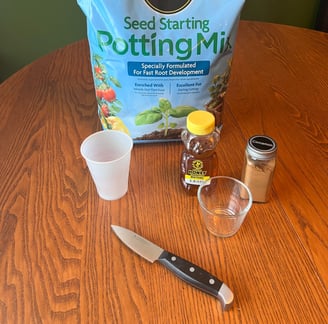

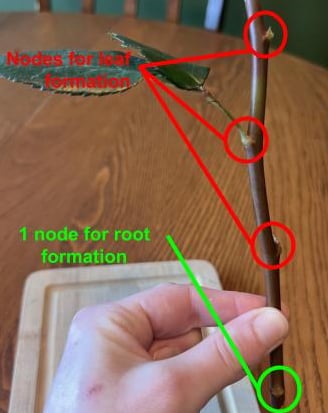

First, the rose stems were cut leaving 1 healthy node for root formation, and 1-3 additional nodes for leaf formation.
I have read mixed recommendations at this step. Some cut all the leaves to promote root growth, and others argue to leave at least one set of leaves to aid in photosynthesis.
In this experiment, we will try both methods. One stem we will remove all but one leaf. The other stem we will remove all of the leaves.
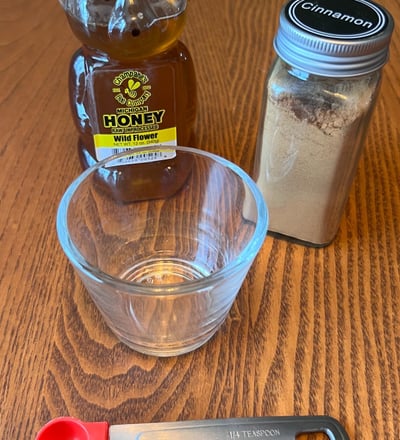

Next, we will need our rooting hormone.
You can buy rooting hormone online or at a local garden store. This will usually contain the hormone auxin, which stimulates root growth from the plant.
You can also make your own rooting mix at home using some common and inexpensive household ingredients. Honey and cinnamon!
These won’t speed up the rooting process as they are not actual hormones. However, their properties in preventing disease potentially improve the overall rooting process and lessen rejection. Honey is a natural antibacterial and antifungal and is thought to help prevent root rot. Cinnamon is also believed to help prevent infection and root rot.
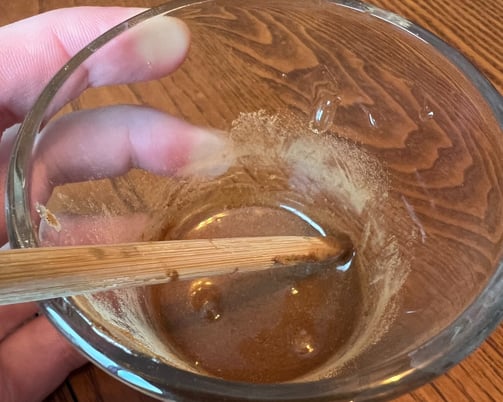

Our focus is on creating a bountiful gardening season without breaking the bank.
In this experiment, we will make our own rooting mix at home using equal parts honey and cinnamon. About ¼ teaspoon each was mixed to form a paste.
The paste was then applied to the bottom of the stem being sure to coat the node that the roots will grow from.
Holes were poked in the bottom of a plastic cup for drainage. Seed-starting soil was added to the cup, then water was added to moisten the soil before planting. This is also a good opportunity to check that the cup is draining properly.
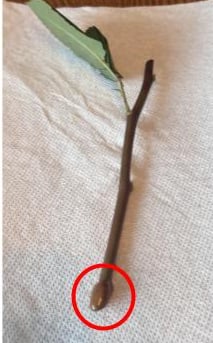

The rose stem was inserted into the moistened dirt about 1 inch and lightly packed and watered. This same process was done for both of our stems.
A jar was placed over the stem without any leaves to create a greenhouse effect and help maintain moisture.
The stem with the leaf on it was placed in a window.
Some have warned that when using a jar or clear cup for a greenhouse top that too much direct sunlight could actually burn the plants. The leafless stem was placed near, but not directly in, the same window.
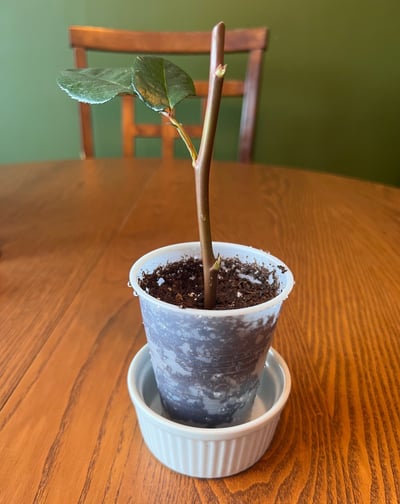

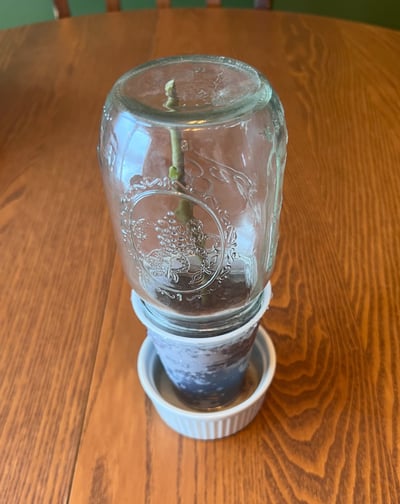

These will be checked daily making sure they are kept lightly moist but not soggy or waterlogged. They will also be checked daily for any signs of disease or root rot. Check back next week as we share what growth we’ve achieved!
We will be conducting many other gardening experiments in our mission to find the best methods that any gardener can use. This month's experiement post was inspire by the idea from my grandmother and the method used from The Easy Garden. Follow along to see what other garden questions we will test next. If you have any suggestions for experiments or gardening questions send a message below!
